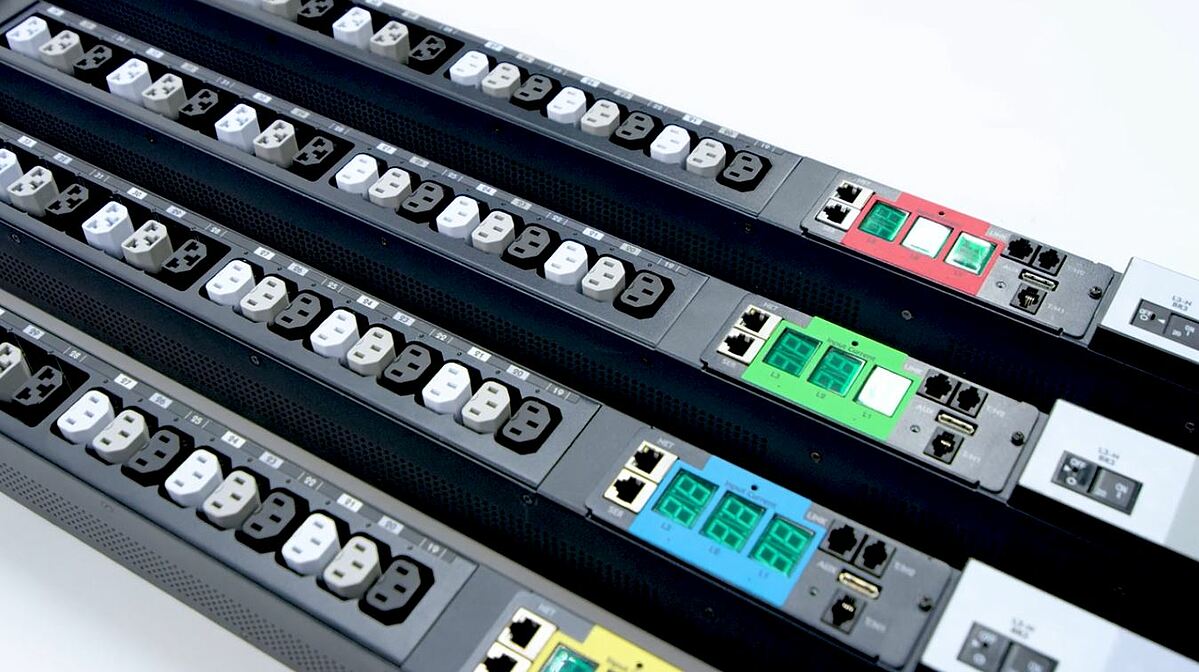Then, What is a Switched PDU?
Annie Paquette
November 19, 2018
- Categories:
- Helpful Features
- Tags:

In our previous post “So, What Is an Intelligent PDU?” we provided some clarification to what can be thought of as a broad a category of products, all of which have a network connection in common. An intelligent PDU is a basic PDU with a network connection. And like most general categories, there are subcategories that bear some discussion.
As we defined it in the last post, an intelligent PDU does two things: first, the network connection provides data feedback on the operation of the unit; second, the network connection provides the ability to control the operation of the unit remotely. From these two features come the two major subcategories in the intelligent PDU world: ‘smart’ for data feedback, and ‘switched’ for command and control.
Not coincidentally, the Server Technology product names for these two types of rack PDUs are Smart and Switched, respectively. They join Kleenex and Band-Aid in a long list of proprietary eponyms: brand names that became the name used for the product in the market. But I digress.
The Server Technology Switched PDU gives data center managers the following capabilities:
Rebooting and power-up sequencing: When a core network device fails, it doesn’t always need to be taken in for service or manually inspected. Sometimes, all it takes is a reboot to correct the underlying error. Reboots aren’t always easy, particularly for multisite data centers or colocation facilities. With a switched PDU, reboots can be performed remotely from a Web interface, potentially eliminating the need to deploy service technicians.
Locking out unavailable outlets: Switched PDUs help ensure reliability in the data center by making outlets unavailable. Sometimes the rack is out of available power, or the phases need to be balanced. In other instances, the data center utilizes a change management procedure that ensures sufficient power before new IT gear is added to a rack. The ability to change an outlet from a ‘power off’ to a ‘power on’ state is important for managing protocol and the critical load.
Scheduling power loads: Many data centers waste power by continuing to run equipment during off-hours when the network is not being fully utilized. With a Switched PDU, you can remotely manage the power schedule on a per-outlet basis. That’s usually because it is a more cost-effective way to keep equipment running and saves time instead of manually rebooting. A switched PDU allows operators to strategically schedule each outlet to avoid wasting power.
Managing multiple data centers. You don’t have one facility to manage, you have two or more. They may be spread out across the country, or even the world. As a result, performing maintenance on your infrastructure can be anything but routine. It may require you, or someone else, to travel to another facility to make physical changes. Or, it may require trusting someone else to perform changes. You can stay in control of your equipment from any location if you use a switched PDU.
With those features, we understand that you might consider this a smart PDU. It’s better to think of it as the Switched PDU in the intelligent PDU category.
Thanks for your submission. One of our Power Strategy Experts will get back to you shortly.